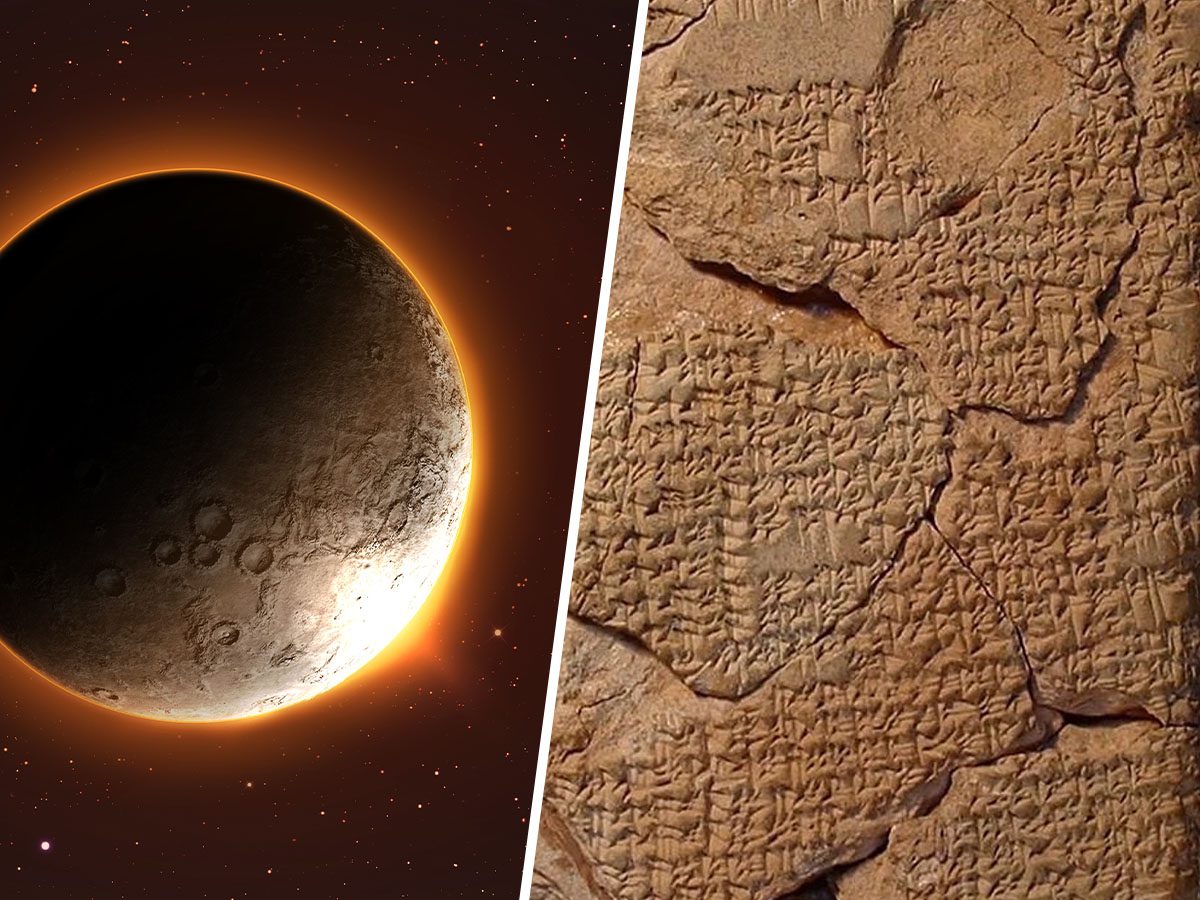
A study released in the Journal of Cuneiform Studies has revealed the complete decipherment of four ancient Babylonian tablets, and it’s not comforting. Study author Andrew George and his partner, Junko Taniguchi, worked on the project, deciphering the writing on four clay tablets believed to be about 4,000 years old. The tablets were discovered over 100 years ago in what is now Iraq, most likely from the city of Sippar, but this is the first time they have ever been fully translated. The tablets contain prophecies obtained from observations of the moon’s movements, particularly of lunar eclipses. The tablets “represent the oldest examples of compendia of lunar-eclipse omens yet discovered” according to George and Taniguchi. The tablets date from a flourishing time of the Babylonian Empire’s reign.
The tablets contain some 60 omens. According to one prediction, when “an eclipse becomes obscured from its center all at once [and] clear all at once: a king will die, destruction of Elam.” Elam refers to a region in what is now Iran. Other predictions include “an eclipse begins in the south and then clears: downfall of Subartu and Akkad,” and “ An eclipse in the evening watch: it signifies pestilence.” Subartu and Akkad were both regions of ancient Mesopotamia. George told Live Science that some of the predictions may have come from personal experience. “The origins of some of the omens may have lain in actual experience — observation of portent followed by catastrophe,” he said.
“The predictions are interesting for the light they shed on the psychology of rulership,” said George. “The omens chiefly predict disasters such as assassination, usurpation, revolt, rebellion, defeat in war, loss of territory, plague, famine, drought, crop failure, locust attack, etcetera. It was evidently exactly these things that Babylonian kings were most anxious about. [The tablets] are important from the point of view of the evolution of humankind’s intellectual inquiry and religious beliefs.” According to George and Taniguchi, the Babylonians didn’t solely rely on the moon for omens. “If the prediction associated with a given omen was threatening, for example, ‘a king will die,’ then an oracular enquiry by extispicy [inspecting the entrails of animals] was conducted to determine whether the king was in real danger.” The people also believed that certain rituals could be performed to counteract the evil forces behind a bad omen. Sometimes, a substitute king would be appointed to take on the gods’ wrath so that the real king would be spared.
George said deciphering the tablets was one more step towards understanding human history. “What cuneiform scholars do is decipher ancient Mesopotamian clay tablets in order to recover knowledge about the most ancient civilizations of the Near East. Every decipherment adds to our understanding of these civilizations and helps us to learn about human history.” He stated that despite there being 500,000 such tablets in museums, only about 20 percent have been fully deciphered. “Most are uncatalogued,” he said. “So Assyriologists are pioneers, still engaged in the primary business of translating the sources and reconstructing the cultural and intellectual legacy of the Babylonians, Assyrians and Sumerians.”


